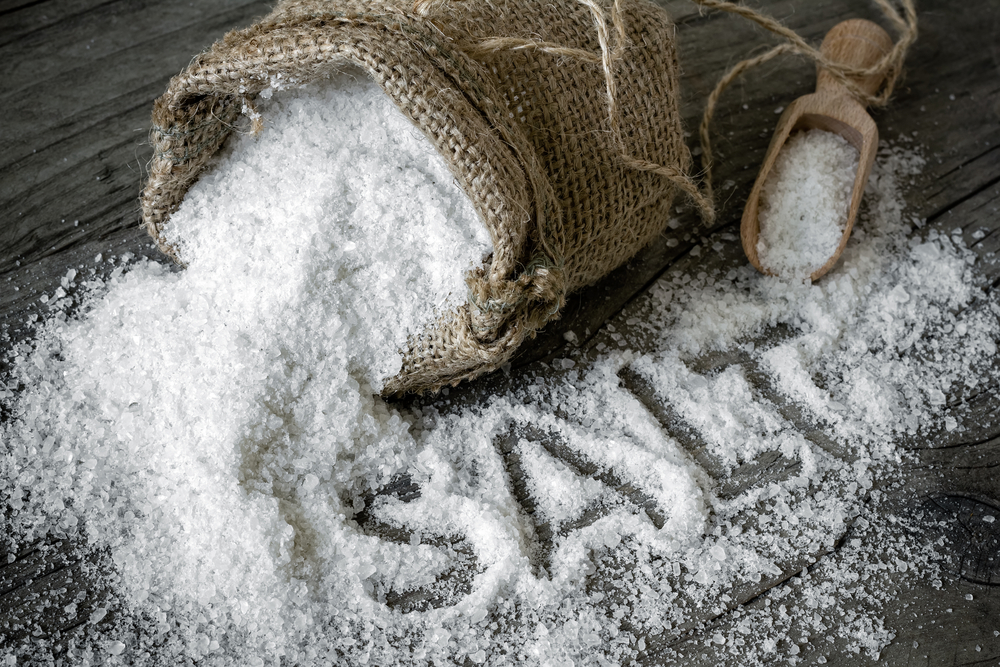Solution for: Early history of salt
Answer Table
| 1. health | 6. beer |
| 2. salary | 7. deserts |
| 3. forest | 8. concentrated |
| 4. October | 9. shipping |
| 5. king | 10. transport |
Exam Review
Early history of salt

You hear part of a presentation about the early history of salt. First, you have some time to look at questions 31 to 40. Now listen carefully and answer questions 31 to 40. In my presentation, I'm going to talk about salt. In modern times, when we talk about salt, people may associate it with high blood pressure or increased heart risk. and many health experts warn that we should use less salt in our meals and dishes. However, we should not ignore its importance in our cuisine. and even in early human history, salt is one of the oldest, most ubiquitous food seasonings. The taste of salt is one of the basic human tastes. More importantly, salt plays an indispensable role in the health of human beings. For example, it regulates the body’s acid base balance. Because of its importance to survival, salt has often been considered a valuable commodity during human history. This can be tracked all the way back to ancient Greece, ancient Egypt and ancient Rome, when salt was highly valued and used as a method of trade and currency. In ancient Rome, the busiest road leading to the city was the Via Solaria, which means the salt route. In English, a soldier’s pay, which partly consisted of salt, was known as solarium Argentum in Latin, from which we derived the English word salary. a soldier’s salary was cut if he was "not worth his salt", an expression still used today. In fact, salt was not only the first condiment discovered, but also the first preservative. We know today that food goes bad because microorganisms in the food multiply in abundance and a high salt environment is not conducive to microbial reproduction. extremely high concentrations of salt can even kill microorganisms in the food. The ancients certainly didn’t know this, but they did know that salted food can be preserved for a long time. The use of salt as a preservative can be traced to ancient Sweden. At first, hunting was the principal means of livelihood. In this case, meat supplies were unlikely to be frequent. What's more, fewer animals were available for hunting. In order to ensure the supply of meat, many families in Sweden began to raise animals in the surrounding forests during the summer when the weather was suitable for animals to survive. These animals were fed every day until about three to four months later . That's in October they were ready to be butchered for meat. and That was the only month when ancient Swedish people had fresh meat on their table. Then, with the continuous increase in productivity, people finally had some meat left. however, how to store the meat had become a headache until someone invented a whole new way to preserve food salting. people tried to keep meat from going bad by adding some salt to it and it could be preserved for several months and even years. There was evidence that salt was widely used to preserve meat. Historical documents in 1573 recorded the Swedish king’s everyday meals, mentioning that 175$ of meat was consumed each year, but over $150 was salty. From this we can clearly see the importance of salt in Sweden at that time. In addition, the documents also noted that the annual sales of beer in Sweden soared during that period and this must be related to high levels of salt in their food. Now let’s turn to the sources of salt. Where is salt from? Well, salt is common in nature. It has long been found that salts can be extracted from seawater mineral deposits, saline lakes, brine, spring, etc. among which the two most important ones are oceans and basins. on the floor of the latter often lie deserts where traces of salt can be found, such as the sahara. Furthermore, the quality of different salt types varies a lot. For example, salt from seawater is always mixed with impurities, so after the salt is dried, the sediments and other chemicals need to be purified before eating. However, this is not the case. with salt from spring water we can hardly find any impurities and the salt level is much more concentrated. Then how did people distribute salt around the world? Of course, in modern times we have various ways of transporting goods, but in ancient times it was not the case. take ancient Sweden we mentioned before as an example. Because of a heavy use of salt in the diet, Sweden could not feed itself and had to import large amounts of salt from other countries in order to make sure they could buy enough salt from abroad. The Swedish had to attach great importance to shipping and keep it undamaged, as it was the most crucial way at that time. while in other ancient countries, in order to distribute salt to other places, groups of men were employed. They put bags of salt on their shoulders or backs and moved them to the surrounding regions. and gradually these people were considered as a mode of transport in early times. Later, with the improvement of traffic conditions, salt trade between different regions was boosted and long distance food trade was also promoted, making communication between different cultures more frequent. and that is the end of part four.
Questions 1-10
Complete the notes below.
Write ONE WORD ONLY for each answer.
The Early History of Salt
Introduction
- Salt is essential for human 1
Answer: health
Ancient Rome
- The word 2 comes from the Latin word’s solarium argetum, which was used to describe the payment to Roman soldiers.
Answer: salary
Ancient Sweden
- Animals were kept in the local 3 at the right time of year.
Answer: forest - Fresh meat was only available in 4
Answer: October - Salt has been used widely: we can tell from the diet of the 5 in Sweden.
Answer: king - 6 Consumption increased rapidly because the food was much too salty.
Answer: beer
Salt source
- People mainly extract salt from oceans and 7 in the basins.
Answer: deserts - Salt from spring water is more 8 and purer compared to that from sea water
Answer: concentrated
Salt distribution
- In ancient Sweden
- Locals needed to protect the 9 by which they imported salt.
Answer: shipping
- In other ancient countries
- People carrying salt around were seen as a natural means of 10
Answer: transport
Other Tests
-
Total questions: 10
- 7- Summary, form completion
- 3- Sentence Completion
-
-
Total questions: 10
- 8- Summary, form completion
- 2- Sentence Completion
-
Total questions: 10
- 4- Multiple Choice
- 6- Sentence Completion
-
-
Total questions: 10
- 4- Summary, form completion
- 6- Sentence Completion









/cdn.vox-cdn.com/uploads/chorus_image/image/49367759/shutterstock_383436070.0.jpg)
